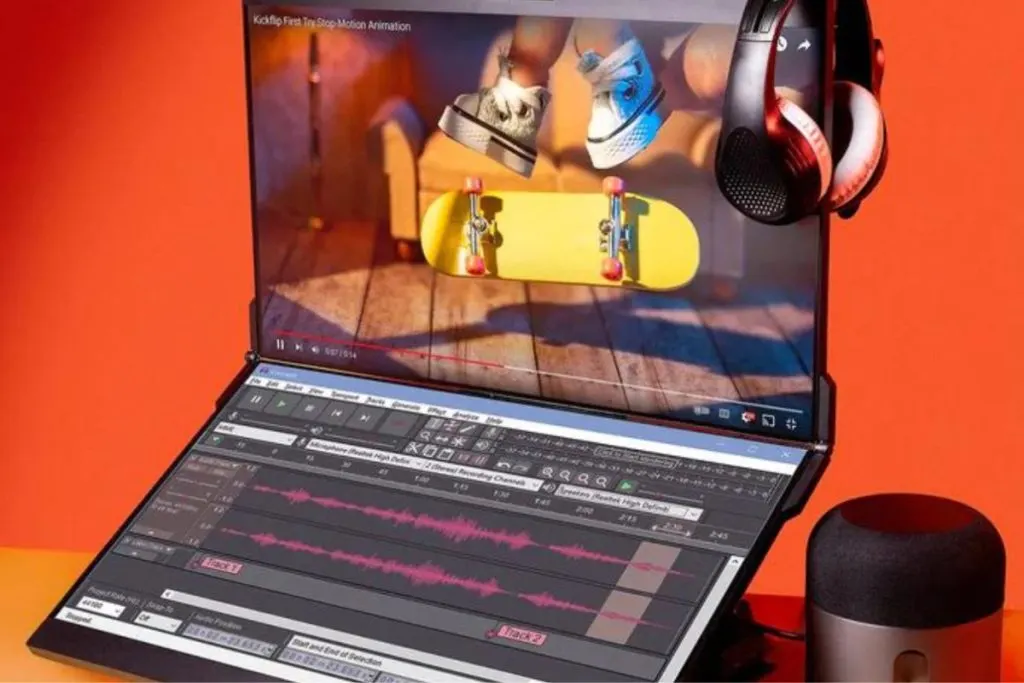For almost a decade or even more, stacked monitors have been taking the leading role in the digital space, proving more than a solution for those seeking increased productivity and a more immersive workspace. However, it’s not just about the desire to have a stacked monitor — it’s a necessity (especially because it concerns the Earth we live in).
As you may already know, Earth Day is on the 22nd of April, and more than ever, it is recommended that all digital enthusiasts, digital nomads, or just anyone who uses a computer switch to the stacked screen setup by then. But why? In this article, we’ll explore why conventional computers need to be switched to stacked monitors like the Geminos dual monitor. We’ll also explain the unbelievable benefits of the switch and provide other details you might need to know. Keep reading for that and more!

Addressing the source point
The entire reason stacked monitors are even a topic, to begin with, is that more people need a bigger workspace to handle more tasks. Ever since the pandemic, the world has continuously shifted from paper to on-screen, with more people having most of their work on their computer (rather than an office). From gamers to data analysts, streamers, designers, coders, or even regular office workers, it now seems that everyone works on their computer. But more often than not, these same people need a bigger workspace.
That’s why a few people opt for multiple monitors to help with the overwhelming tasks. But as easy as that solution may seem, it is not the best. Not only does this clog up your work desk with too many cables or devices, but it is also not the most eco-friendly option.
The Environmental Cost of Multiple Monitors
Among all the other departments we can look into, traditional multi-monitor setups come at some very major environmental costs, which makes them (unfortunately) not the best choice. Here are those costs:
Energy consumption
Like it or not, computers will always consume energy. But our goal should be to reduce energy consumption and our carbon footprint — not to increase it. Well, that’s exactly what having multi-monitors would do. Since each monitor requires its own power source, that’ll lead to increased energy consumption in total, which, in turn, translates to a larger carbon footprint (and don’t forget the higher electricity bills you’ll need to pay).
Manufacturing footprint
Like it or not, manufacturers make plenty of a product when the demand for it increases (it’s simple economics). Therefore, if you (and a thousand other computer users) stop asking for more than a single computer (because some people have over 5 computers squeezed into one table), the use of more resources for the production of more laptops will cease.
E-waste
Similarly, the more computers are in use, the more possible waste there can be. So when those monitors reach the end of their lifespan, they’ll contribute to the growing problem of electronic waste (e-waste) if not disposed of responsibly (and don’t forget that the Earth does not exactly love the taste of electronic waste).
The Sustainability Advantage of Stacked Monitors

Now, let’s talk about the better option — stacked monitors. How can these devices help make the world a better place? Here are the ways stacked monitors offer a compelling alternative, promoting a more eco-friendly workspace.
Reduced Footprint
Stacked monitors are two screens setup into one monitor stand (in a vertical manner). Now, since it is one monitor stand, it significantly takes up less space than two, and this inevitably minimizes the overall desktop clutter. But that’s not all. You won’t be needing the large desk that two or more computers demand. But how do all of these decrease footprints? In a word, manufacturing. Given that you’ll need a smaller desk space, it’ll translate to less material usage in production and potentially less space needed during transportation.
Energy Efficiency
Another advantage is that many stacked monitors have features that automatically adjust brightness based on ambient light, hence reducing energy consumption. Additionally, using a single monitor reduces the overall display area needing illumination, potentially leading to lower energy consumption.
Extended Lifespan
Besides those two, you can also save the earth by reducing how often you create e-waste. By using a single, potentially higher quality monitor instead of two budget-friendly ones, you might extend the overall lifespan of your display setup. This reduces electronic waste generated from discarding multiple monitors. Also, stacked monitors have a longer durability than multiple monitors used simultaneously.
Fewer Cables
Finally, stacked monitors typically require fewer power and video cables than a dual- or more monitor setup. With this minimalistic touch, the setup simplifies cable management, reduces potential e-waste from discarded cables, and creates a cleaner aesthetic. Plus, you’ll be choosing a more eco-friendly option.
Conclusion: Celebrate Earth Day with Sustainable Savings!
Besides getting an eco-friendly monitor, you can also enjoy Earth Day by saving on costs. In honor of Earth Day, you can take part in the APR Earth Day sale, which offers multiple products with up to 15% off. While you don’t need any code, you may need to hurry because it’s only for a limited time (from April 22nd to April 25th only). So hurry, and take advanatage of this opportunity to invest in a more sustainable and ergonomic workspace.

